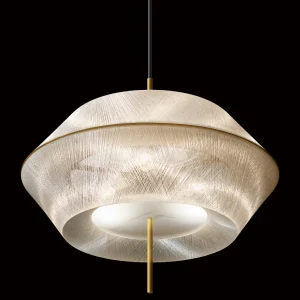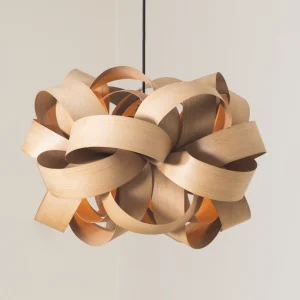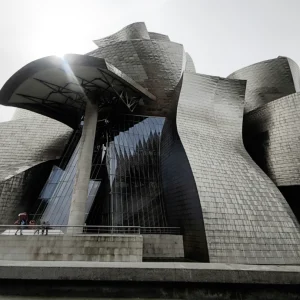All Images: Veronica Simpson
THERE CAN’T BE MANY contemporary art museums that could throw a short notice ceilidh in their courtyard and expect a decent number of people to turn up. But as I was leaving the Irish Museum of Modern Art (IMMA) – situated in Dublin’s Kilmainham suburb, so not on the city’s nightlife circuit at all – on a thankfully dry July evening, the ceilidh band was seated and practising its reels. Would anyone turn up when the gig started in half an hour? I was tempted to stay but had other fish to fry. However, the scheduling of this ceilidh, plus an abundance of other community events and enrichments that caught my eye on the museum’s scrolling events feed on the TV in its foyer, made me think: this isn't like many other contemporary art museums.
I had noticed a large brood of mums and babies lurking in the IMMA’s restaurant, well after lunchtime. Could it be that they had attended the parent and baby art tour takes place on alternate Thursdays from 11am–12pm? I’d clocked the offer of ‘free yoga classes’ too.
It seemed a call to Sheena Barrett, the IMMA’s head of research and learning, was in order. For starters, how many people turned up to that ceilidh? Over 100, she said, though the school holidays had just started so usually they get more. ‘We had one ceilidh when 4,000 people turned up.’ Luckily, the cobbled courtyard around which the IMMA buildings are arranged could accommodate that many: the IMMA is set within the medieval buildings that once formed the Royal Hospital Kilmainham (completed 1680), which itself is modelled on Les Invalides in Paris. Its evolution since the 1980s represents an inspirational approach to retrofit by the Office of Public Works (OPW), with the museum officially opening in 1991, but new facilities and improvements added through to 2000.

Alex Cecchetti's installation The Journey of One Breath
The ceilidh is part of a wider music programme that many locals would know about, says Barrett – that is one advantage of the IMMA being set within a largely residential area. ‘There’s music every Thursday and every Sunday, some more traditional Irish, but the full breadth of different types of music… We had an amazing Brazilian touring group – they did lots of workshops. We have another group coming in September, who are travelling from Germany, slow travelling and performing all the way across Europe.’
These slow travellers may well be participating in another major event in September: the IMMA’s annual eco festival Earth Rising, now in its third year. Three days of screenings, talks, workshops and activities are promised, exploring how to live in balance with the planet and our local ecosystems, bringing creativity into the mix in all its forms. This is also free of charge. Last year they had 1,600 attendees.
 Lawrence Abu Hamdan’s Air Conditioning (2022)
Lawrence Abu Hamdan’s Air Conditioning (2022)
The story of the IMMA’s special relationship with the local community goes back to its early days, says Barrett. ‘When it was set up the director had a strong vision about being connected in a very deep way locally. The first education curator, Helen O’Donohue, went on to develop a whole department with really strong links with the community and even deeper connections with a particular social housing estate, St Michael’s estate. She worked with that community to develop the thinking on how we might build those relationships. There was a lot of partnership around programming.’
One of the inspiring programmes developed from this time was around Art and Ageing, especially ‘to think about how best to support people with early onset dementia and their carers’. The IMMA’s team further enriched their approach to art and wellness with the support of Dublin’s Mercer Institute for Successful Ageing, and the Global Brain Health Institute, at University College Dublin.
 Isobel Nolan's Deep Time Day tapestry (2024)
Isobel Nolan's Deep Time Day tapestry (2024)
‘We worked with them around our programmes that happen online and in nursing homes, and we have packs that can be sent out to people, that were been developed during Covid. We also have this programme called In the Moment, which includes breath work or movement in advance of looking at art work. The invitation is really around experiencing art and mindfulness together – a real focus on taking time for yourself. They would be led by members of our team who are both art historians but also breath work practitioners or yoga practitioners. We also work with local hospitals, supporting training for their teams, particularly in the occupational therapy area. Increasingly, they are socially prescribing for their patients that they attend our workshops. We find more and more people coming through these health networks.’
The Mercer Institute has just released a report into the factors that have the greatest impact on successful ageing. Says Barrett: ‘They found that 15 minutes a day of creativity has a huge impact. So that could be engaging in making but also looking, dancing, listening to music, reading a book, any of these things if you just dedicate 15 minutes a day.’
It's somehow no surprise to hear Barrett declare: ‘What we want to be is the most welcoming museum in the country.’ I feel that ethos has been absorbed in the curatorial approach to its current exhibition, Take A Breath (on until 17 March 2025): an immersive exploration of the role that oxygen plays in our lives, and the geographical, political and cultural significance of the qualities of the air we breathe. It starts with a deep blue, sub-aquatic installation by artist and freediver Alex Cecchetti, articulating the beauty of underwater environments and their inhabitants, complete with two hammocks in which visitors can relax while watching films of turtles and sea creatures playing across blue, hand-dyed curtains. It includes harrowing art works too – an extended photograph by Lawrence Abu Hamdan, Air Conditioning (2022) showing a visual map of the air polluted by the Israeli army during continuous unauthorised incursions into Lebanese air space. And there are powerful photographs from Khadija Saye from a series called In This Space We Breathe (2017-18), made all the more impactful by the fact that Saye was one of the 72 who lost their lives in the Grenfell Fire. The show steers us thoughtfully through a whole range of issues, emotions and environments, concluding with a tranquil space with meditative, geometric paintings by Patrick Scott, and a hand-woven tapestry by Isabel Nolan inspired by the knowledge that when oxygen became dominant in the atmosphere, between 2.4 and 2.1bn years ago, it heralded the extinction of a millions of life forms to whom it proved toxic.
Universally relevant themes explored through world-class art and artists, in the most welcoming museum space in Ireland? It seems like a winning formula to me.





